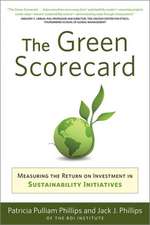Asset Allocation, Performance Measurement and Downside Risk
Autor Alexandra Elisabeth Janovskyen Limba Engleză Paperback – 24 mar 2001
Preț: 546.36 lei
Preț vechi: 674.52 lei
-19% Nou
Puncte Express: 820
Preț estimativ în valută:
104.56€ • 108.76$ • 86.32£
104.56€ • 108.76$ • 86.32£
Carte disponibilă
Livrare economică 25 martie-08 aprilie
Preluare comenzi: 021 569.72.76
Specificații
ISBN-13: 9783838632216
ISBN-10: 3838632214
Pagini: 124
Dimensiuni: 148 x 210 x 9 mm
Greutate: 0.17 kg
Editura: diplom.de
ISBN-10: 3838632214
Pagini: 124
Dimensiuni: 148 x 210 x 9 mm
Greutate: 0.17 kg
Editura: diplom.de











